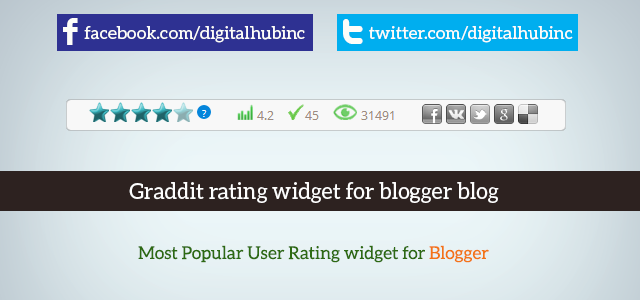Designers love to complain about “superficial” design trends that they don’t feel have any staying power or contribute anything meaningful to the industry. But are they right?

Today we’re going to talk about design trends and new phenomena that get many designers pumped up, but that can also draw the ire of others who think the design industry is going down the tubes.
Recommended Reading: How To Keep Your Design Skills Fresh
Are Design Trends Superficial?
I happen to think that whatever users find “trendy” or cool, even though it may be fleeting, is part of the service a designer provides. It’s part of what clients are paying for. If you’re offering classic, outdated solutions that nobody wants, you are only hurting your own career. Yes, it might be annoying to feel you must bend to the whims of the “masses,” but if those masses are looking for something you can’t give them, they aren’t going to pay you.
Adopting visual trends is simply a part of providing a commercial service. The only way you can really subvert a design trend is by creating one of your own, which allows you to be the thought leader and influence other designers to follow your lead instead. This is extremely difficult to do, however, and the vast majority of designers are followers rather than leaders.
That may seem harsh, but it’s true. You can be convinced that you’re completely original and unique, yet still be a follower of overall design trends, often without even realizing it. Don’t believe me? Just look at the designs for tablets and smart phones both before and after the release of the iPad and iPhone. Those designs were so influential that they virtually eliminated any design possibility other than sleek, thin, and black (or white).
The Nature Of The Beast
Yes, it’s true that trends are fickle, often short-lived things. As we all know, people are quick to jump all over any new trend, causing it to look dated in a matter of months. But, like it or not, that’s the nature of the industry, particularly these days. Ideas spread much faster than they used to, thanks to the Internet. Which means that designers and clients alike are exposed to new trends constantly.

Think of the phenomenon of Internet memes that come and go in waves. One minute, everyone’s buzzing about the latest antics of some celebrity or YouTube video. Then, sometimes just mere days later, it’s old news, and people get tired of it.
Not to say that design trends are that short-lived (usually), but the general idea is the same. Humans are seekers of novelty. Once something is “conquered territory,” it ceases to hold our attention. We start looking for new sources of stimulation almost immediately – we can’t help ourselves.
This tidal approach to trends can seem chaotic and, to the cynical, merely another example of the intellectual simplicity of the general public. It doesn’t mean that the trend was necessarily bad; just that people are quick to copy whatever they think is cool. Monkey see, monkey do, and all that.
But how do you stay abreast of new trends while not running around like a headless chicken, trying to adapt to every new trend you think might get you more clients? There are 3 ways you can go about it, which I will explain.
1. The Puzzle Piece Approach
You can use the constant influx of new trends to your advantage as a designer, adjusting your personal style to fit the range of what clients may be looking for depending on which corner of the web they approach you from. I call this the “puzzle piece” approach – you have the missing piece of the puzzle for every design project you take on.
This isn’t a bad way to do business as a freelancer if you don’t mind the constant switching and adapting. You probably won’t gain the venerable reputation of someone who sticks to their guns, but if you can continue to ride the wave and know just when and how to adapt, you’ll have a long career ahead of you.
2. The True Blue Approach
On the other hand, you may wish to develop a reputation for creating work that always bears your personal mark or style. You buck any and all new trends, and only serve clients who are looking for exactly the type of design work you specialize in. This is a great way to build a solid, loyal client base and following, but there can be dangers here as well. You may find your base getting smaller and smaller as people’s attention is drawn to newer, more exciting trends.
However, if you can stick it out for the long haul, you’ll find that your client base is far more loyal, and usually willing to pay a premium for the unique perspective you provide. Your ability to be a true blue designer is largely dependent on the health of the design market, which in turn influences the amount of business you’ll bring in with your designs. The recent economic troubles around the world have made this more difficult than it once was, but, like design trends themselves, things will eventually come full circle. Patience is the key.
3. The Goldilocks Approach
Personally, I think the ideal approach lies somewhere in the middle. If you’re too much of a trend hopper, you’ll have no credibility as a designer. However, if you’re too absorbed in your personal style preferences, you’ll alienate too large a portion of your potential market. Don’t get me wrong – I’m the biggest believer in niching down your potential pool of clients. But you don’t want to go so niche that you’re unable to grow and expand your career.
The goal is to be flexible. Show your clients and users that you’re not a Luddite, stubborn and out of touch with the world. But also, carve out a space of your own where you can dominate with your unique perspective on design and be seen as a thought leader (even if you’re still following overall trends. It’s okay – it happens to 99% of us).
What Do You Think?
Do you pay attention to trends? How do you handle the job of maintaining the perfect approach that fits your clients’ needs while staying marketable to new clients?
Related posts:
![]()





















No Comments